Merovingian necropolis with warriors, horses and unusual burials unearthed in Germany
Fifteen graves dating from the Merovingian era, which lasted from the 5th century to AD 751, have been discovered during roadworks in Theißen, a hamlet of Zeitz, Germany.
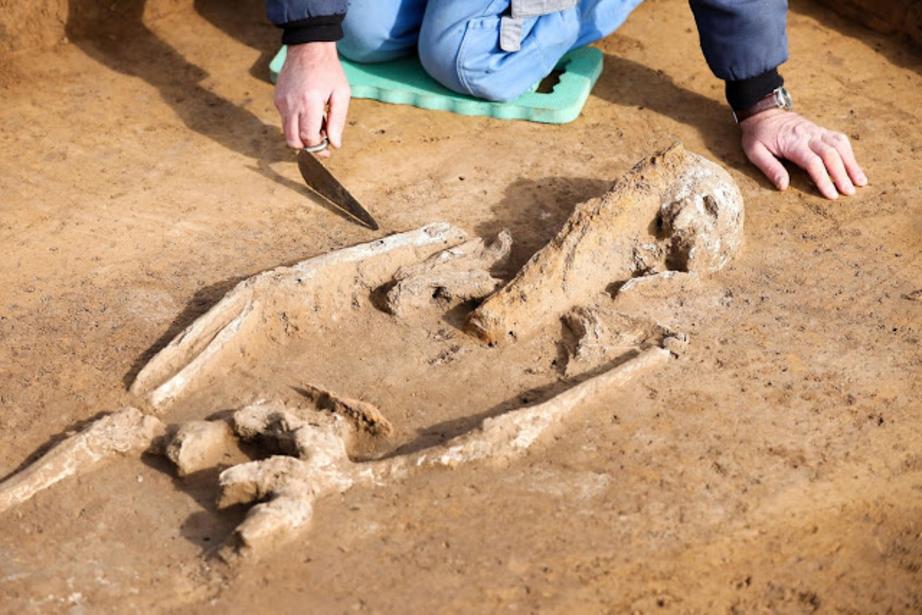
Woman's skeleton with an iron bar through her chest [Credit: dpa]
Among the most surprising remains are those of a woman aged between 16 and 18, buried face-down, "with her hands tied and an iron bar piercing her chest," said Susanne Friederich, director of the archaeological project.
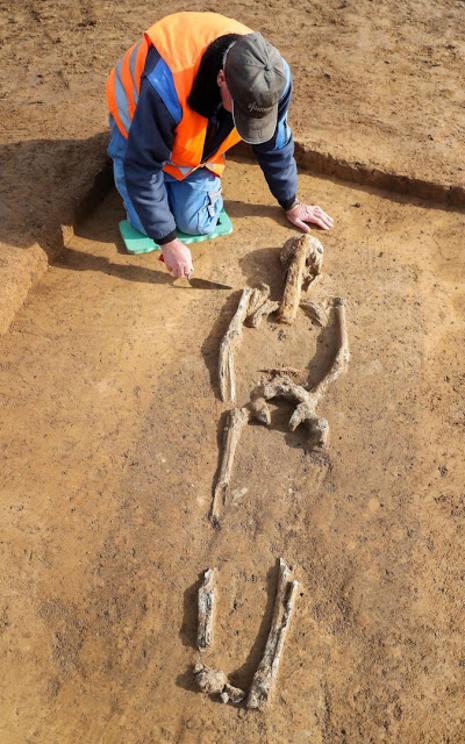
Woman's skeleton with an iron bar through her chest [Credit: ZB]
"It seems that she was buried in this way so that her soul would not abandon the tomb," Friederich added. "Reasons for this may be that she was disabled or malformed, had special, perhaps inexplicable and thus frightening abilities, or that she was simply regarded as a witch."
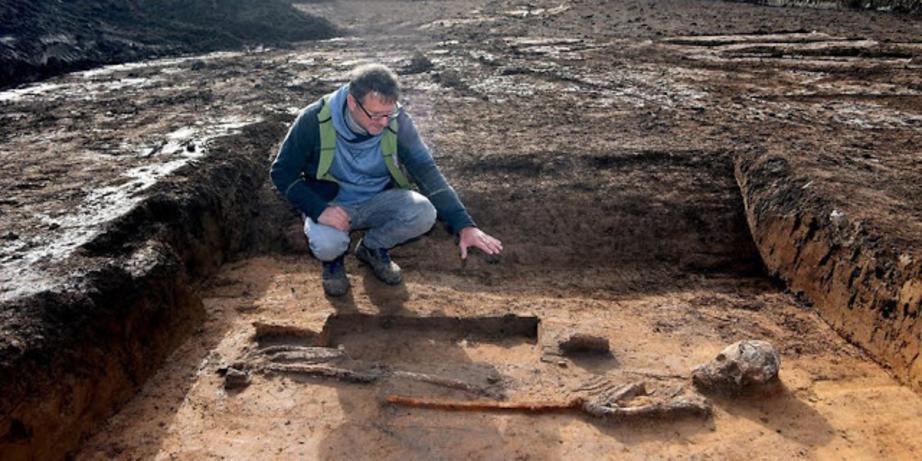
Dovydas Jurkenas, the leader of the archaeological excavations, at the exposed grave of the medieval warrior [Credit: Hartmut Krimmer]
"It may be that this unusual burial of the young woman was also due to the fact that she came to the Zeitz region from far away. This could be found out by means of teeth, for example, if there is preserved material", adds Friederich.
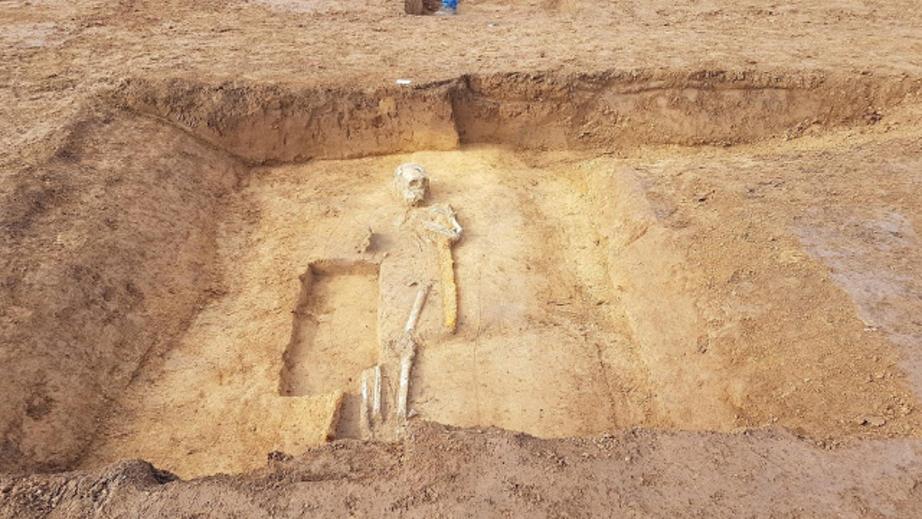
The grave of the medieval warrior [Credit: ZB]
"With the iron driven through the back and chest and its anchoring in the ground, a resurrection was to be prevented. The deposition of the dead facing the earth served this purpose, to point the 'dying soul' away from the living. The head of the young woman was not oriented to the west as usual, but to the east. The bones of the deceased, however, are in poor condition because the loess soil lets a lot of water through."
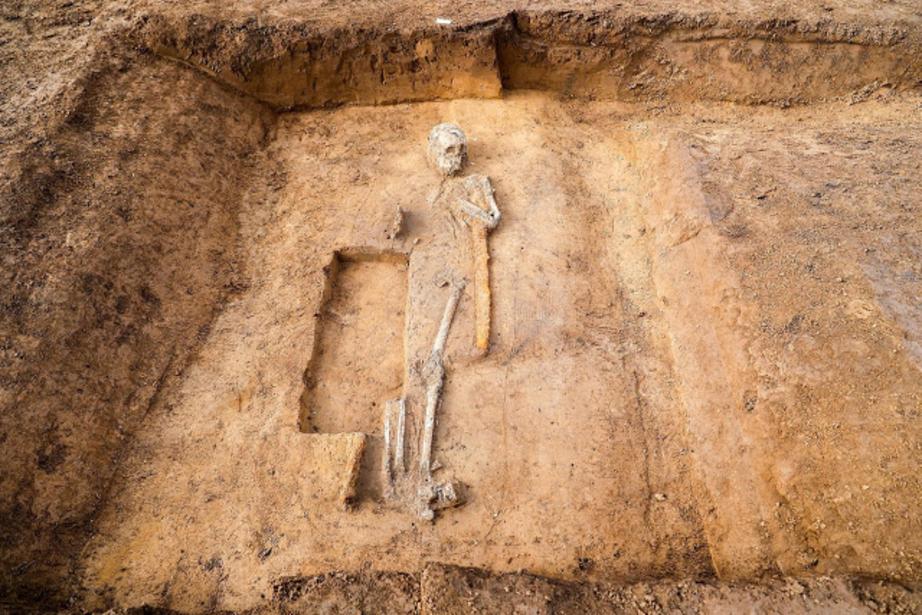
The grave of the medieval warrior [Credit: ZB]
Archaeologists have also excavated the body of a very tall man, about 2 metres in height, with a sword and a spear, as well as three burials of horses.
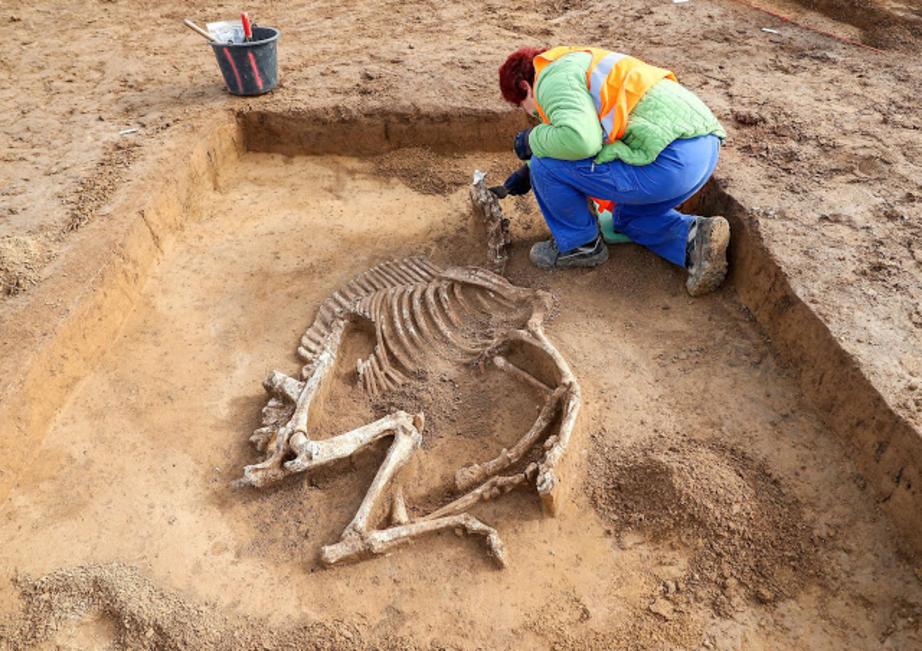
Excavating a horse burial [Credit: ZB]
"The remains of the giant man are probably those of a warrior, perhaps a leader. In his left arm he holds an iron sword, on his right side there are remains of a lance. His clothes were girded and closed with a brooch," says Friederich. "The horse graves were probably not directly related to the dead," she adds.
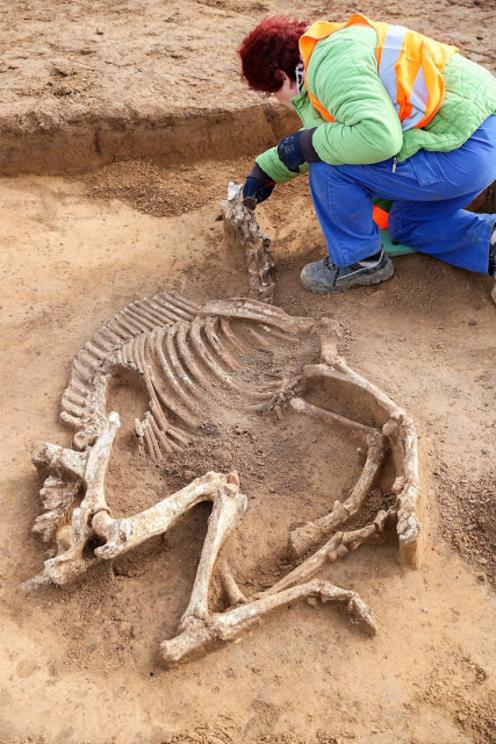
Excavating a horse burial [Credit: ZB]
In addition, the archaeologists unearthed a grave in which human bones are jumbled up. "There is currently no explanation for this. There is no evidence that grave robbers are responsible since jewellery made of glass and bronze were found in the grave."
Slavic and Bronze Age settlements and burial sites were found in the summer near the present site of the cemetery. The new findings indicate a varied and continuous settlement history of the area. "The area was used again and again," says Friederich.
The excavations will continue until November.
